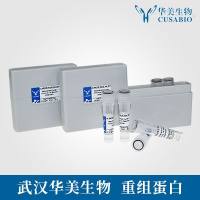Measurement of Nitric Oxide in Single Cells and Tissue Using a Porphyrinic Microsensor
互联网
- Abstract
- Table of Contents
- Materials
- Figures
- Literature Cited
Abstract
This unit describes the preparation and applications of porphyrinic sensors for quantitative measurement of nitric oxide (NO) in single cells and in tissues. The determination of NO is based on the electrochemical oxidation of NO on a carbon fiber electrode covered with a thin layer of a conducting polymeric metalloporphyrin catalyst, overlaid with another thin film of Nafion, a cation exchange material. The electric current generated during NO oxidation on the surface of the polymeric porphyrin is linearly proportional to the concentration of NO, so this current is used as an analytical signal which can be measured in either the amperometric or the voltammetric mode. Both methods provide a quantitative signal. This unit describes the electrochemical setup for measurement of NO in single cells and tissue. Support protocols describe porphyrin synthesis, sensor preparation, and sensor calibration.
Table of Contents
- Basic Protocol 1: Measurement of Nitric Oxide in Single Cells and Tissue with a Porphyrinic Microsensor
- Support Protocol 1: Preparation and Calibration of Porphyrinic Sensors
- Support Protocol 2: Preparation of Bare Carbon‐Fiber Electrodes
- Support Protocol 3: Preparation of TMHPPNi Electrochemical Coating Solution
- Support Protocol 4: Preparation of Saturated NO Solution
- Reagents and Solutions
- Commenatry
- Literature Cited
- Figures
Materials
Basic Protocol 1: Measurement of Nitric Oxide in Single Cells and Tissue with a Porphyrinic Microsensor
Materials
Support Protocol 1: Preparation and Calibration of Porphyrinic Sensors
Materials
Support Protocol 2: Preparation of Bare Carbon‐Fiber Electrodes
Materials
Support Protocol 3: Preparation of TMHPPNi Electrochemical Coating Solution
Materials
Support Protocol 4: Preparation of Saturated NO Solution
Materials
|
Figures
-

Figure 7.14.1 Electrochemical deposition of a polymeric TMHPPNi film on the surface of a carbon electrode. Multiple‐scan cyclic voltammograms were recorded with a scan rate of 100 mV/sec. Peak Ia indicates oxidation of Ni(II) to Ni(III) and peak Ic indicates reduction of Ni(III) to Ni(II). Rising current (IIa ) indicates catalytic oxidation of water. Peaks A and B are due to oxidation of substituent(s) of the porphyrinic ring. View Image -

Figure 7.14.2 Typical voltammetric and amperometric curves showing response of the sensor to NO in homogenous solution. (A ) Differential pulse voltammogram obtained from 0.2 µM NO. E p is the peak potential. (B ) Amperograms obtained at different concentrations of NO. View Image -

Figure 7.14.3 Nitric oxide concentration measured with porphyrinic sensor placed at different distances from the membrane surface of a single bovine aorta endothelial cell. The porphyrinic sensor was placed at the indicated distance from the membrane surface of the cell, and NO release was stimulated with 1 µM calcium ionophore A23187. View Image -

Figure 7.14.4 Typical amperograms showing NO release from single bovine aorta endothelial cells either (A ) isolated from culture or (B ) maintained in culture. The porphyrinic sensor was placed 2 µm from the membrane surface of the cell, and NO release was stimulated with 1 µM calcium ionophore A23187 (arrow). View Image -

Figure 7.14.5 Nitric oxide release measured near endothelial cells of rabbit mesenteric artery (A ) and aorta (B ). The porphyrin sensor was placed 2 ± 0.2 µm from the membrane surface of the endothelium, and NO release was stimulated by the application of 1 µM calcium ionophore A23187 (arrow). View Image
Videos
Literature Cited
| Literature Cited | |
| Adler, A.D., Longo, F.R., Finarelli, J.D., Goldmacher, J., Assour, J., and Korsakoff, L.J. 1967. A Simplified Synthesis for meso‐Tetraphenylporphyrin. Org. Chem. 32: 476. | |
| Archer, S. 1993. Measurement of nitric oxide in biological models. FASEB J. 7: 349‐360. | |
| Baek, K.J., Thiel, B.A., Lucas, S., and Stuehr, D. 1993. Macrophage nitric oxide synthase subunits. J. Biol. Chem. 268: 21120‐21129. | |
| Feelisch, M. and Stamler, J.S. 1996. Measurement of NO‐related Activities—Which Assay for Which Purpose? In Methods of Nitric Oxide Research (M. Feelisch and J.S. Stamler, eds.) pp. 303‐307. John Wiley & Sons Ltd., Chichester, UK. | |
| Fleming, I., Hecker, M., and Busse, R. 1994. Intracellular alkalination induced by bradykinin sustains activation of constitutive nitric oxide synthase in endothelial cells. Circ. Res. 74: 1220. | |
| Friedemann, M.N., Robinson, S.W., and Gerhardt, G.A. 1996. O‐phenylenediamine‐modified carbon fiber electrodes for the detection of nitric oxide. Anal. Chem. 68: 2621‐2628. | |
| Hecker, M., Mülsch, A., and Busse, R. 1994. Sub‐cellular localization and characterization of neuronal nitric oxide synthase. J. Neurochem. 62: 1524‐1529. | |
| Kiechle, F. and Malinski, T. 1993. Nitric oxide: Biochemistry, pathophysiology and detection. Am. J. Clin. Pathol. 100: 567‐575. | |
| Malinski, T. and Taha, Z. 1992. Nitric oxide release from a single cell measured in situ by a porphyrinic microsensor. Nature 358: 676‐678. | |
| Malinski, T.L. and Czuchajowski, L. 1996. Nitric oxide measurement by electrochemical methods. In Methods of Nitric Oxide Research (M. Feelisch and J.S. Stamler, eds.) pp. 319‐339. John Wiley & Sons Ltd., Chichester, UK. | |
| Malinski, T.Z., Taha, Z., Grunfeld, S., Burewicz, A., Tomboulian, P., and Kiechle, F. 1993. Measurements of nitric oxide in biological materials using a porphyrinic microsensor. Anal. Chim. Acta 279: 135‐140. | |
| Malinski, T., Patton, S., Pierchala, B., Kubaszewski, E., Grunfeld, S., Rao, K.V.S., and Tomboulian, P. 1994. Kinetics of nitric oxide release in the presence of superoxide in the endocardium as measured by a porphyrinic sensor. In Frontiers of Reactive Oxygen Species in Biology and Medicine (K. Asada and T. Yoshikawa, eds.) pp. 207‐210. Elsevier Science Publishing, Amsterdam. | |
| Marletta, M.A. 1994. Nitric oxide synthase—Aspects concerning structure and catalysis. Cell 78: 927‐930. | |
| Mesaros, S., Grunfeld, S., Mesarosova, A., Bustin, D., and Malinski, T. 1997. Determination of nitric oxide saturated (stock) solution by chronoamperometry on a porphyrin microelectrode. Anal. Chim. Acta 339: 265‐270. | |
| Nathan, C. and Xie, Q.W. 1994. Nitric oxide synthases: Roles, tolls, and controls. Cell 78: 915‐918. | |
| Schmidt, H.H.H.W. 1994. NO at work. Cell 78: 919‐925. | |
| Stamler, J.S. 1994. Redox signaling‐nitrosylation and related target interactions of nitric oxide. Cell 78: 931‐936. | |
| Vallance, P., Patton, S., Bhagat, K., MacAllister, R., Radomski, M., Moncada, S., and Malinski, T. 1995. Direct measurement of nitric oxide in human beings. Lancet 345: 153‐154. |









